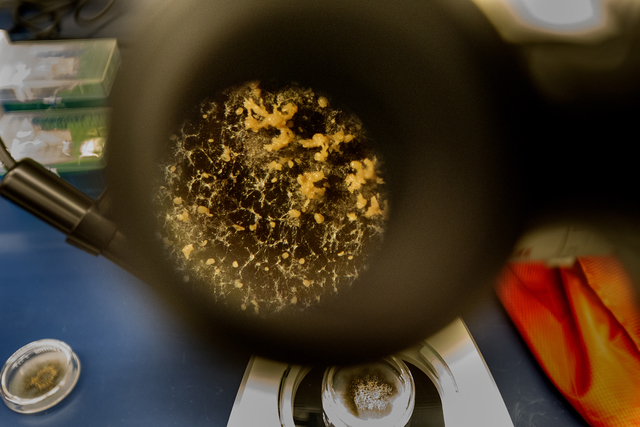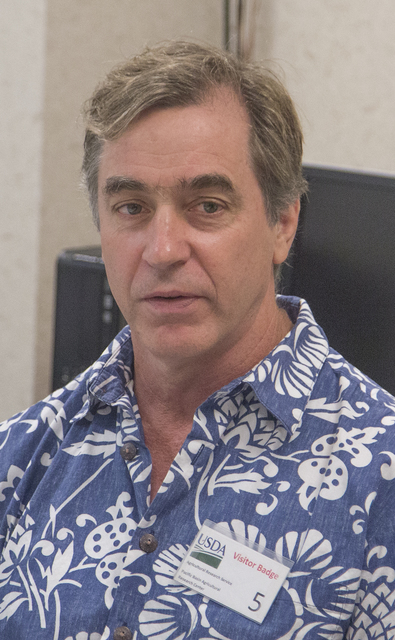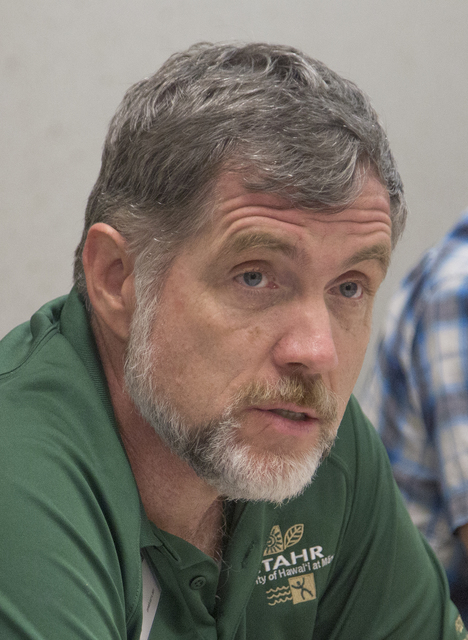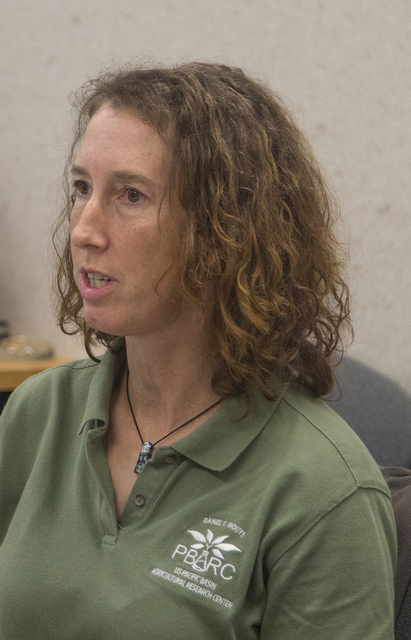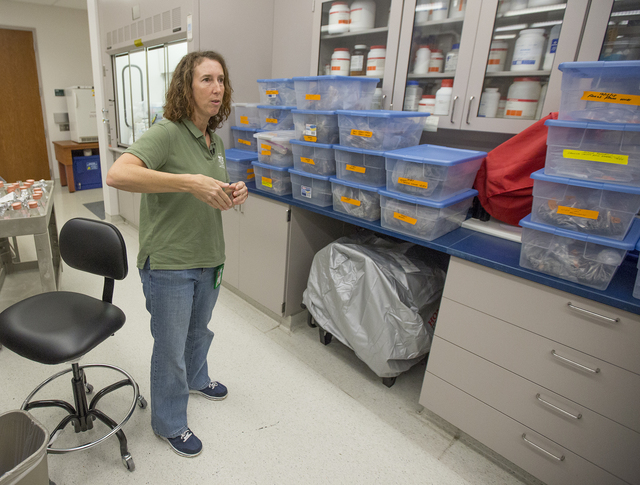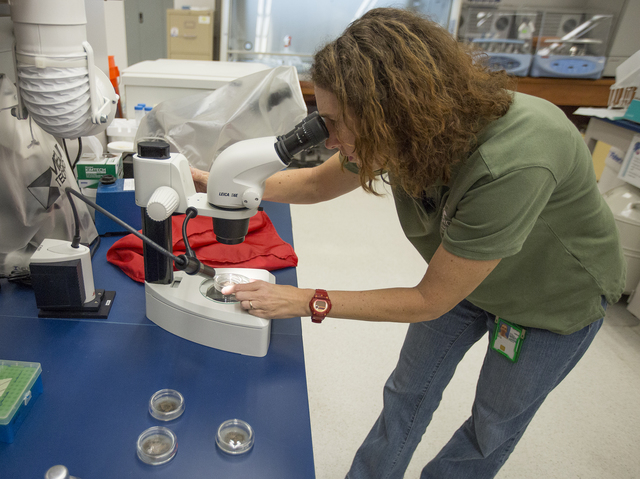Agencies coordinate efforts to fight ohia wilt
Researchers say the fungus currently threatening Hawaii’s ohia trees could have disastrous impacts on the state’s fragile ecosystem if the pathogen is allowed to spread unchecked.
Multiple state and federal agencies have partnered to address the disease, known as “rapid ohia death” or “ohia wilt,” and efforts are under way to identify control techniques for the mysterious strain of fungus, which was unknown to scientists until it was identified last year as the cause of massive die-offs reported within ohia forests in Puna.
It has since spread across the island to Kona, and most recently was confirmed in Ka‘u. It is capable of killing a mature ohia tree in a matter of weeks, and has an average mortality rate of about 50 percent in ohia stands that have been inspected. The mortality rate can be 90 percent or higher in some areas, however.
At a press conference held Wednesday at the U.S. Pacific Basin Agricultural Research Center in Hilo, researchers and representatives from government agencies discussed the extent of the problem and described ways that Hawaii Island residents can help to prevent the spread of ohia wilt, both on the Big Island and throughout the state.
Meanwhile, a concurrent press conference in Honolulu featured Department of Land and Natural Resources Chairwoman Suzanne Case and Department of Agriculture Chairman Scott Enright, who are heading up the battle against rapid ohia death.
“Ohia trees cover more than 1 million acres statewide, and ohia is widely considered the most important forest tree in Hawaii,” Case said. “They are so important for protecting our forest watersheds that it’s necessary our approach to combating this disease involves the highest levels of government and includes non-government agencies and private partners that can provide additional resources and expertise.”
The DLNR’s Division of Forestry and Wildlife, in cooperation with the University of Hawaii Cooperative Extension Service and the U.S. Department of Agriculture, has produced a brochure and rack card featuring information on the fungus, including tips on handling infected trees and tree parts, as well as how to identify whether a tree is infected.
Hilo-based Extension Forester J.B. Friday said he has been concentrating on contacting private land owners to help them identify infected trees and show them how to handle them.
As he explained, “humans are the biggest factor in spreading the disease.”
People who handle the wood, leaves, twigs and other parts of infected trees can unsuspectingly carry the fungus on their clothing, equipment and tools, which is likely how the disease spread to Kona from Puna so quickly, Friday said.
While the research is still in its early stages, work is being done to develop sanitation procedures and methods to prevent the spread of the fungus spores, which can remain viable for up to a year, said Lisa Keith, a research plant pathologist with the USDA’s Agricultural Research Service.
Meanwhile, political partners are looking to find further funding for the control efforts. Currrently, about $700,000 is available, according to DLNR spokesman Dan Dennison. About 25 percent of that total came from state agencies, 25 percent came from federal, and 50 percent was provided by private foundations.
In a phone interview Wednesday afternoon, state Rep. Richard Onishi, D-Hilo, Keaau, Kurtistown and Volcano, said he is looking into the possibility of introducing a bill when the new legislative session begins in January seeking funding for more technicians to combat rapid ohia death.
Onishi said he did not know yet how much money that would require, but said he has talked with the rapid ohia death working group about finding funding for three technicians. He added that he hopes any plans will include solutions that benefit the Big Island specifically, and not just the rest of the state.
“I think there’s basically two issues that really need to be addressed,” he said. “One is how do we address the areas on the Big Island that are not affected at this point? And the other issue, which the Department of Agriculture has already addressed, is the spread to the other islands. They have already put a quarantine in place for ohia products being shipped to other islands.
“… One thing we don’t want to have happen is to have it spread to those areas not already affected (on Hawaii Island). Like with coqui frogs and fire ants. They never really did anything on our island to address their spread. And by far we have the largest ohia populations in the state. … It would have a drastic effect on our rain forests and our watershed.”
In response to Onishi’s concerns, Dennison explained via email Wednesday that a quarantine stopping movement of products between regions of the Big Island would not be as effective as a quarantine stopping movement between islands.
“Slowing the spread is possible, while stopping it will be more difficult,” he wrote. “We still do not know how exactly it’s spreading in the environment. Insects are a possibility scientists and resource managers are looking into.”
More information can be found at www.rapidohiadeath.org.
Email Colin M. Stewart at cstewart@hawaiitribune-herald.com.


